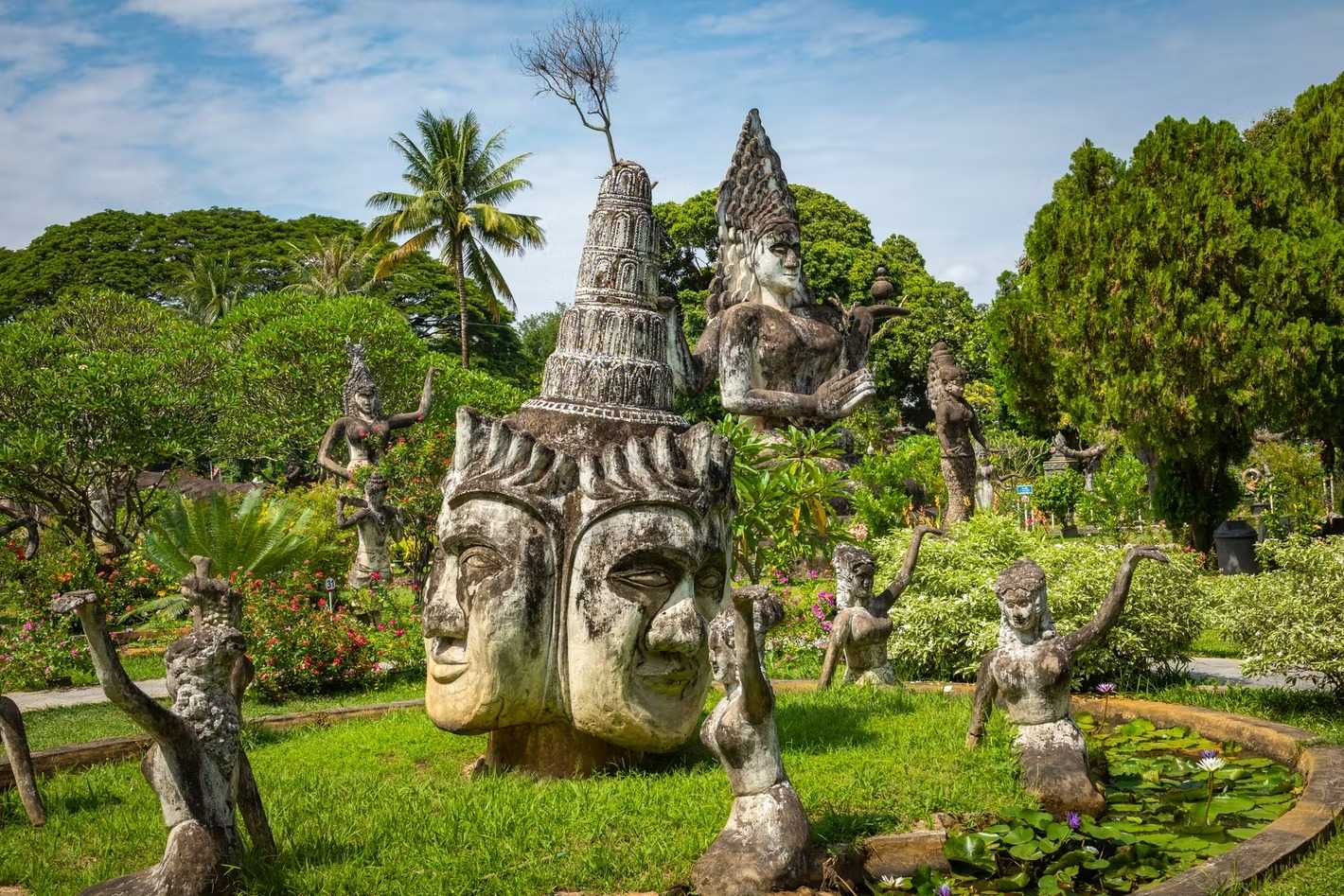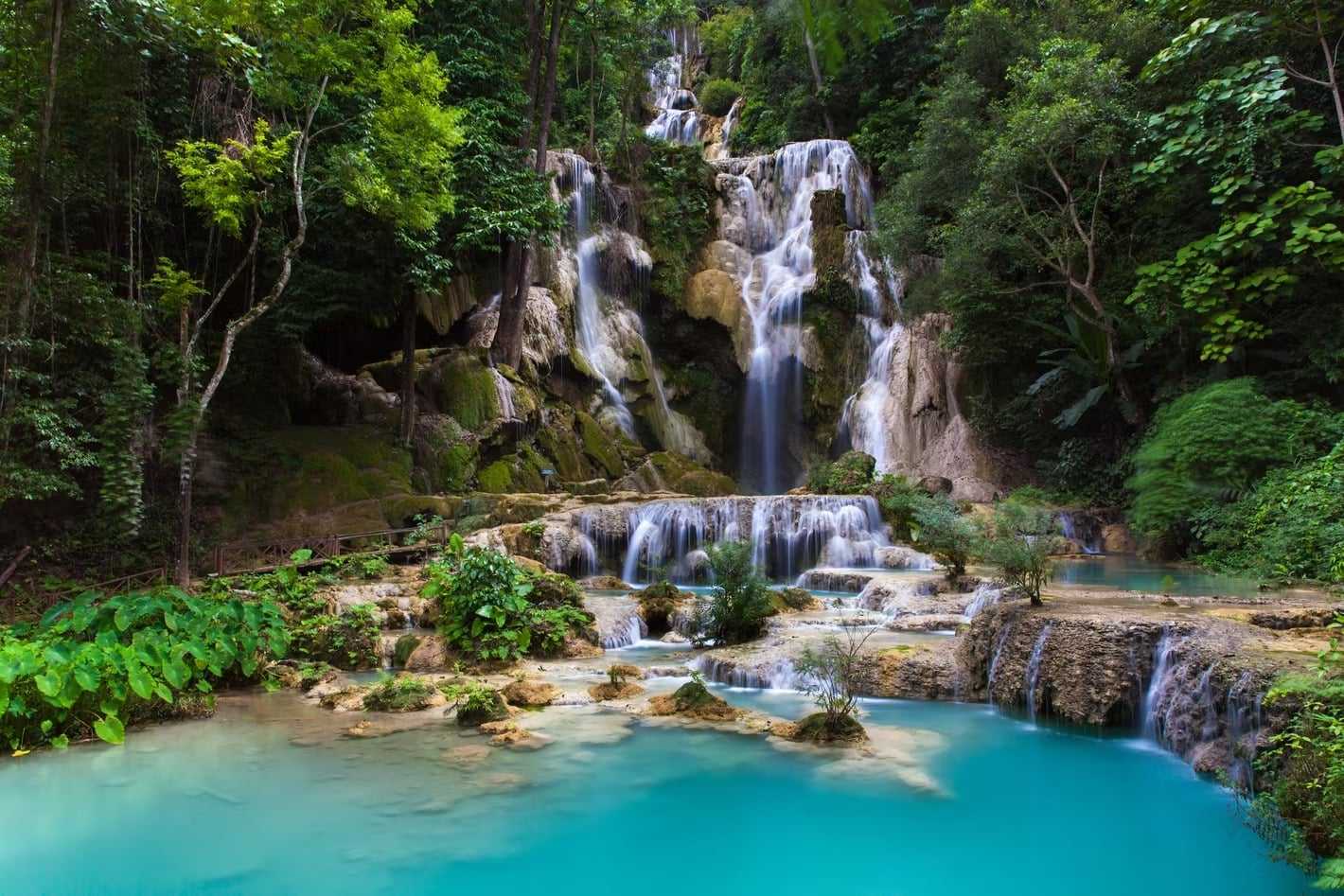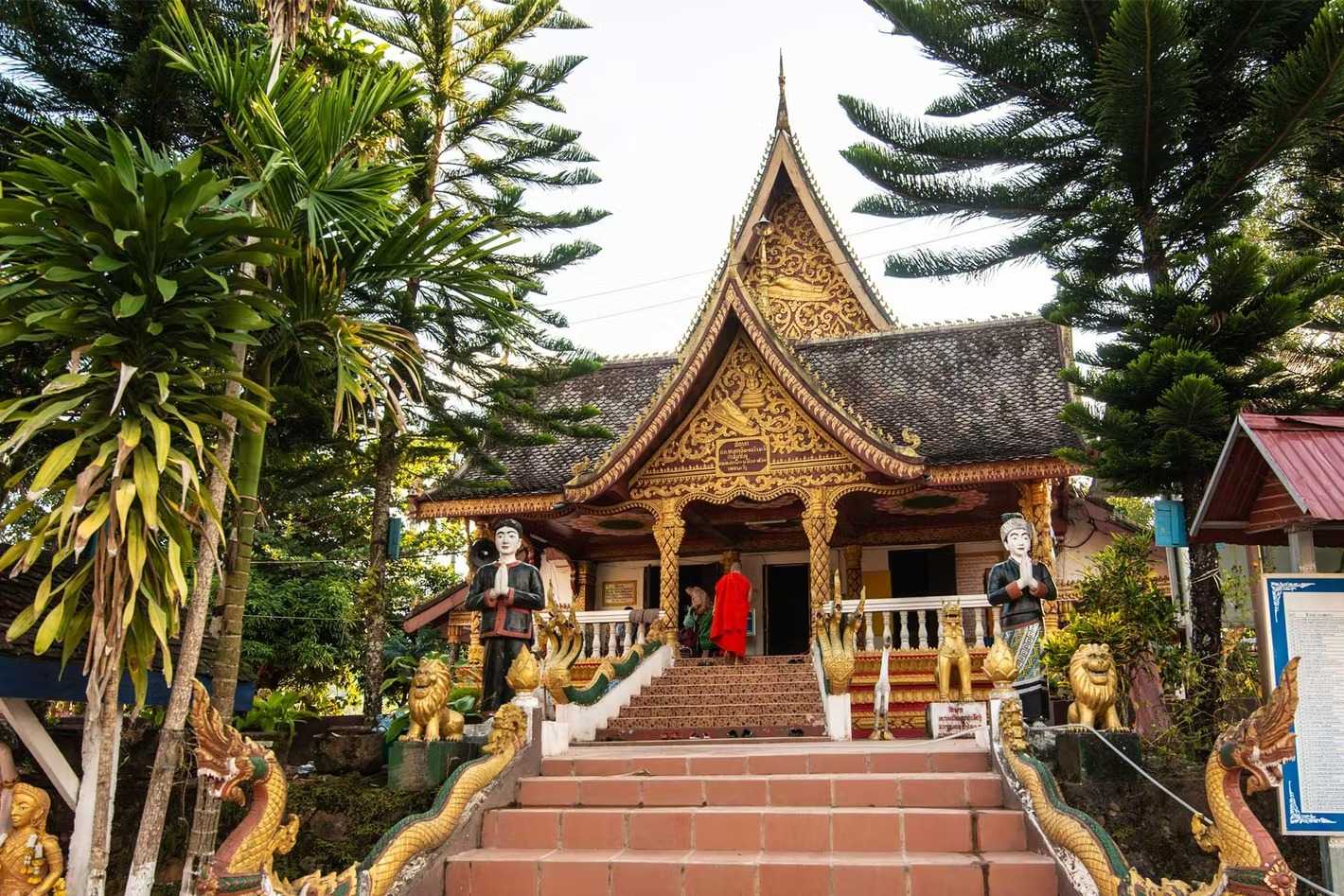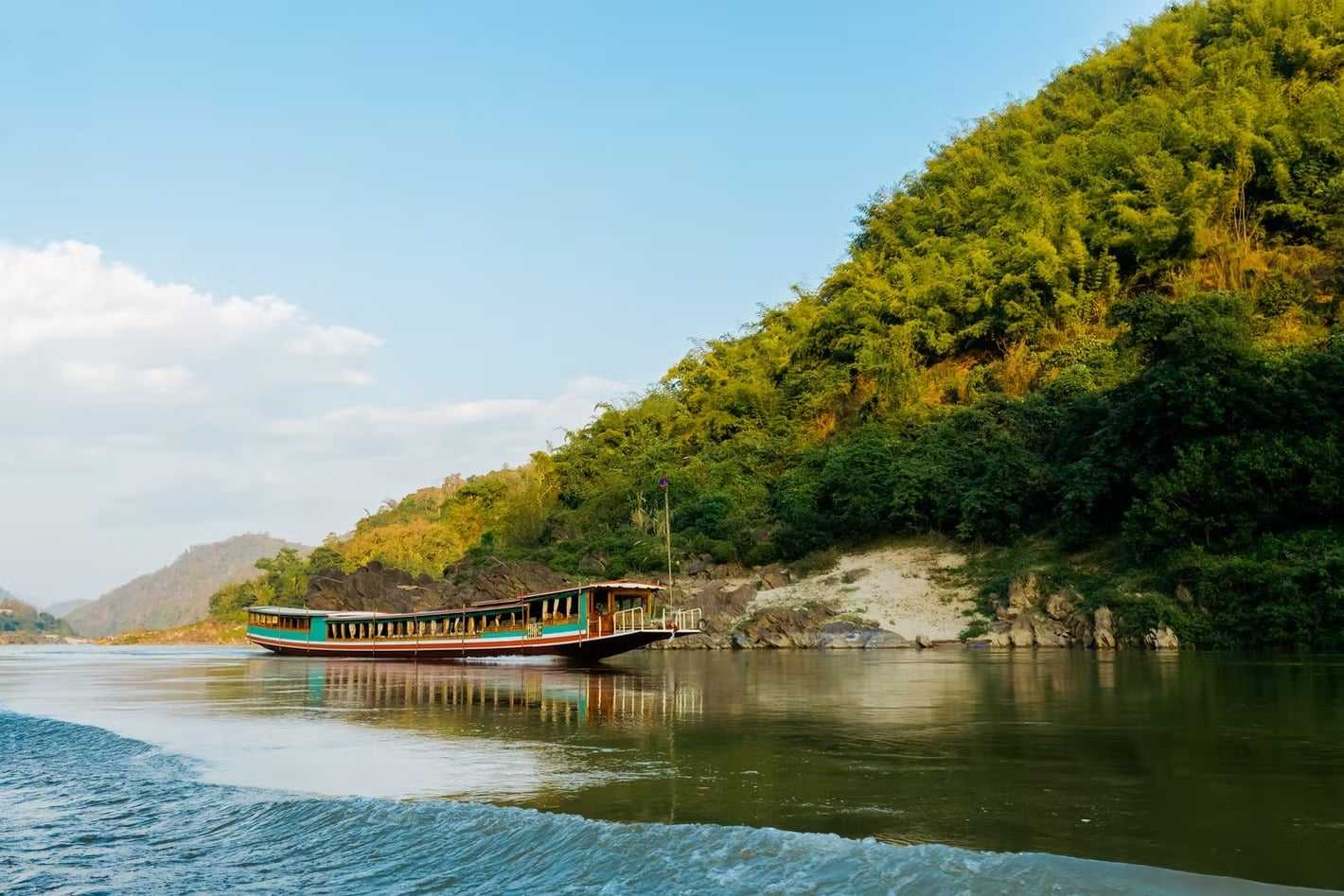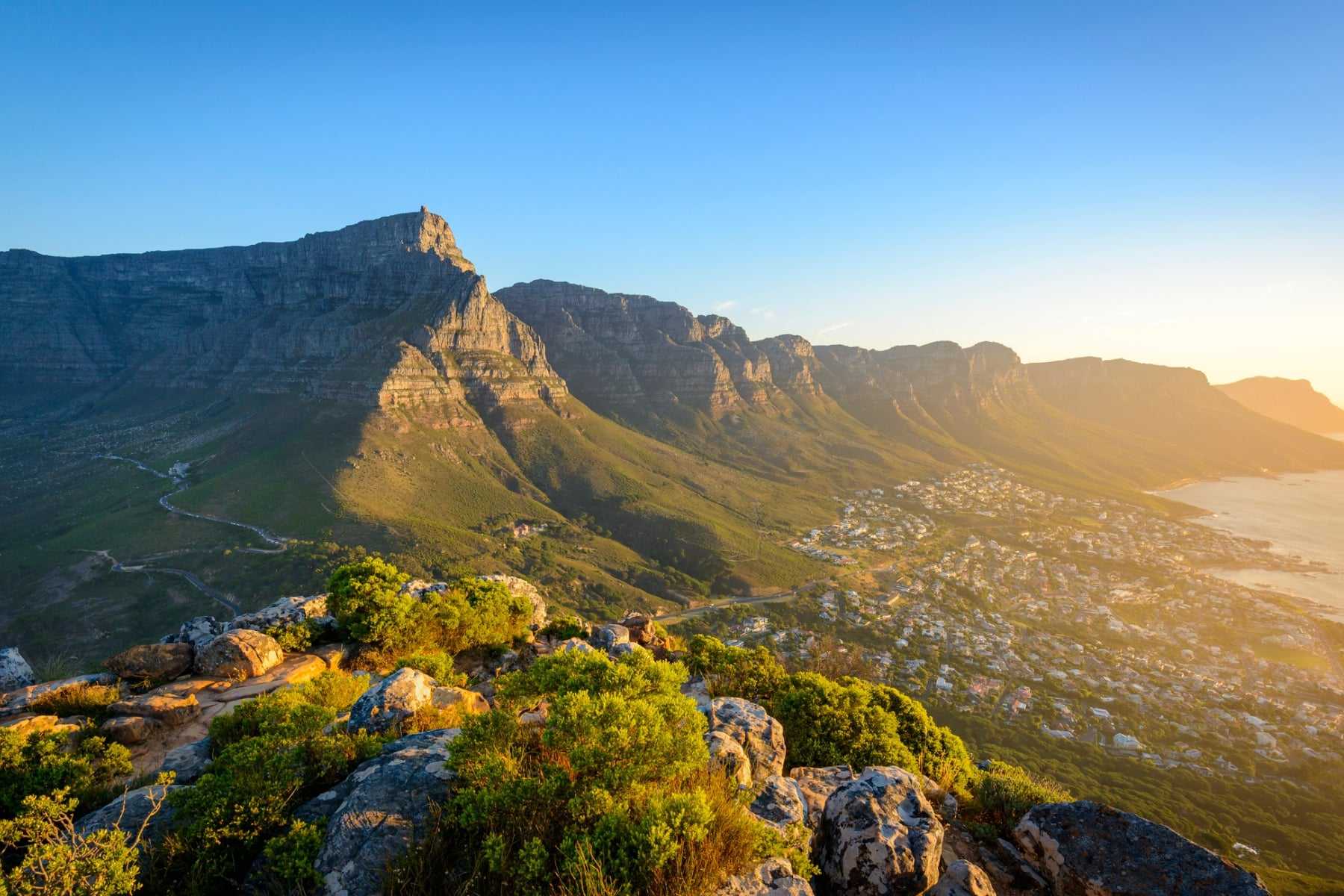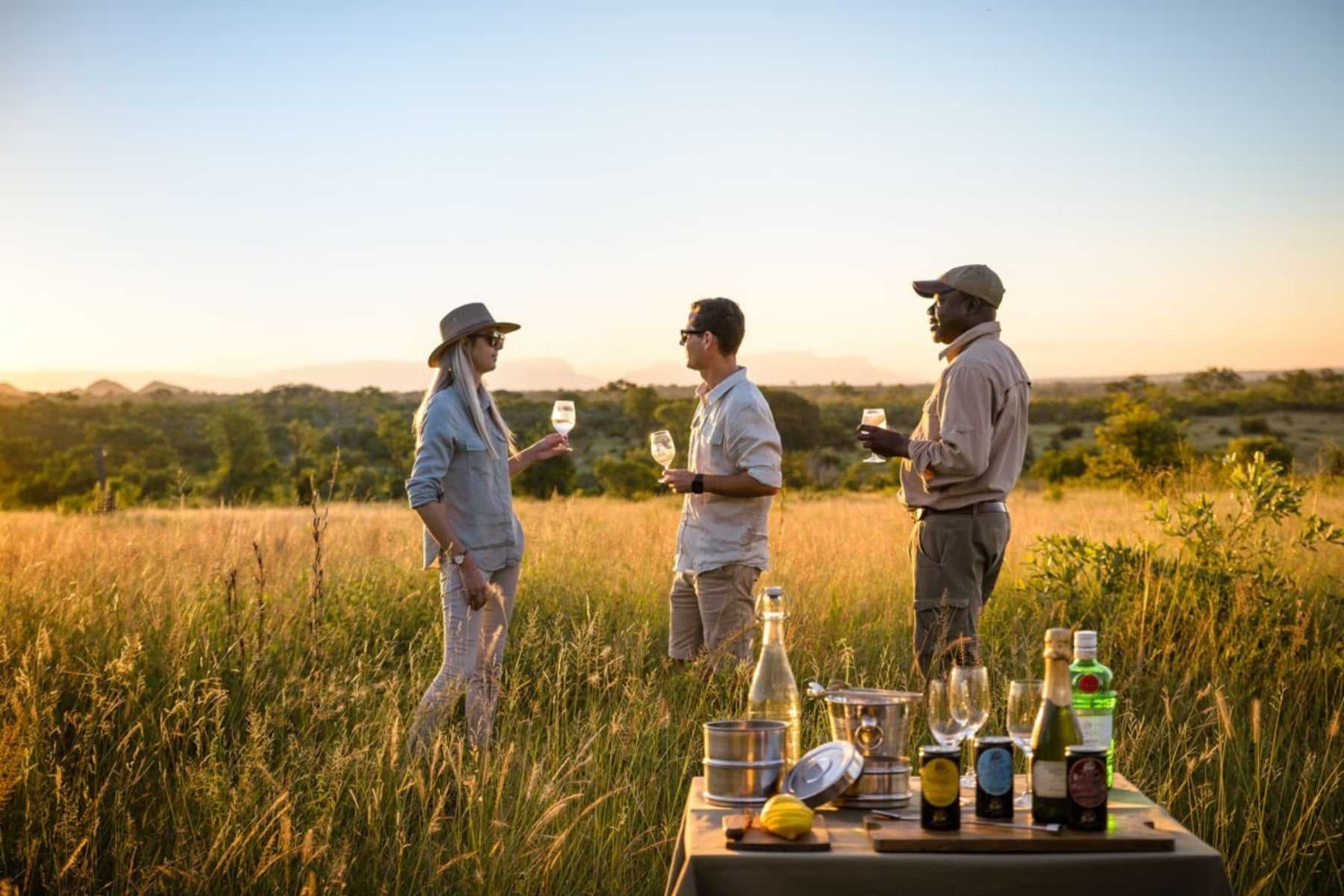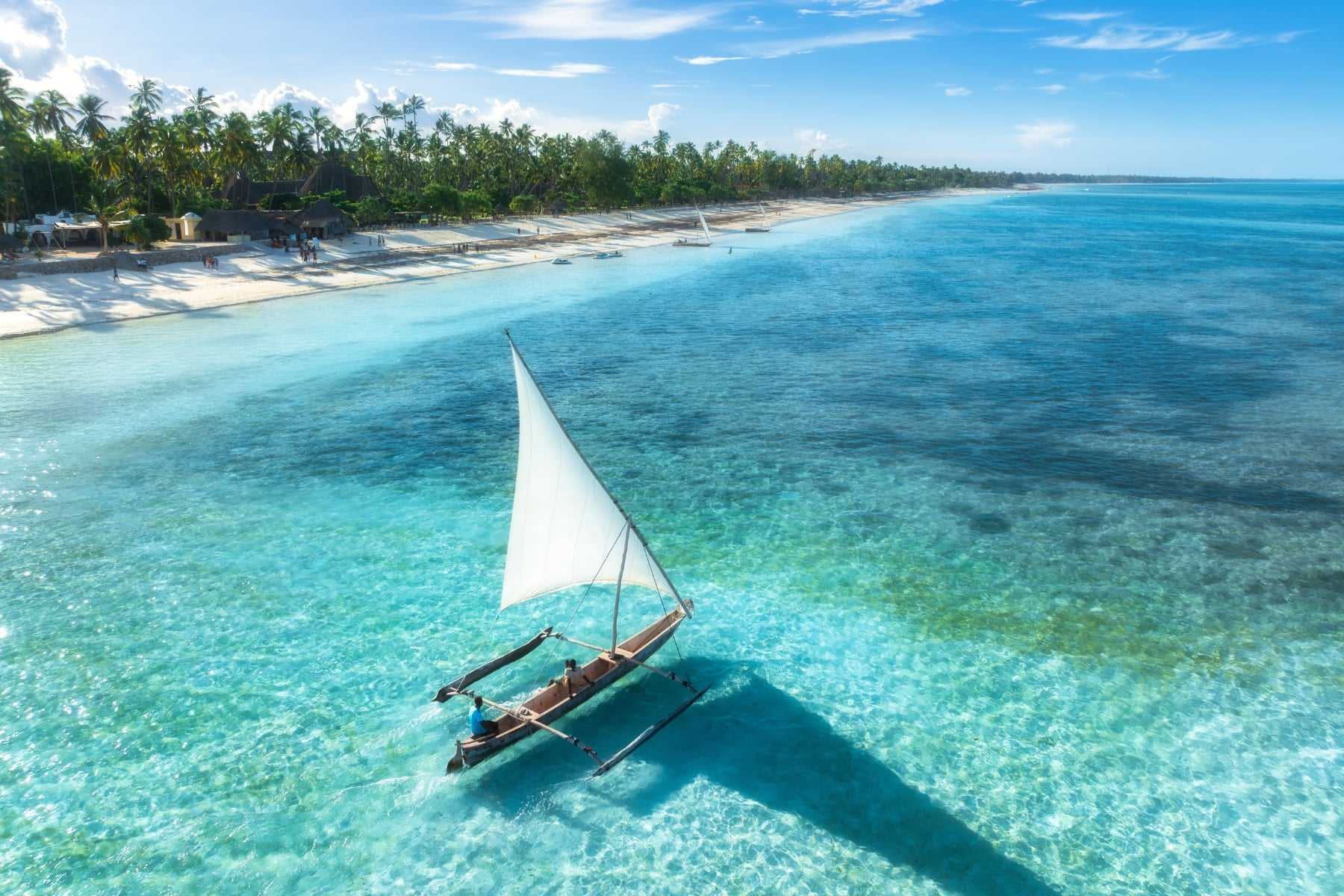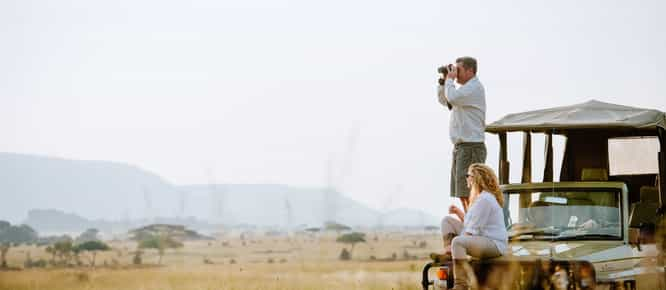The best time to visit Laos
A place where rivers and valleys of green easily outweigh any semblance of a city, Laos is a well-kept secret amongst the South East Asian superstars. As spiritual as it is wild, the scope for adventure, serenity and life-changing experiences is rife, whether you take in the scenery from a boat on the Mekong or hike through Buddha-filled caves, visit revered temples or breathe new air at a hilltop retreat. Weather patterns are pleasantly easy to figure out, so whichever activity you would like to embark on, let our guide help you decide on the best time to visit Laos.
October to February
Following the mid-year rains, the country is a tapestry of green and, with near-constant sunshine, the dry season is the best time to visit Laos. Between October and January, water levels are at their fullest making it an ideal time to explore via picturesque rivers and tributaries, and swim in the many waterfalls. Oh, and a cruise down the Mekong is beautiful at this time of year.
This is also the perfect time to visit Champasak and the 4,000 Islands archipelago, where incredible birdlife and sunny beaches are a given. The energetic Boat Racing Festival takes place in Vientiane in the 10 days leading up to the October full moon, which is always an exciting event. The entire country is in full bloom with glorious flora covering the valleys and hillsides, making hiking, cycling and trekking into the forests especially enjoyable.
Temperatures during these months tend to be just right for strolling through Laos’ historic towns amongst the gilded temples and Buddha statues, like Vientiane’s famous Wat Si Saket. In November, the That Luang Festival takes place in Vientiane, where thousands of monks and pilgrims gather at the city’s Grand Stupa, lit up in vivid colour. If you’re visiting in February, the Full Moon Festival brings large gatherings to local temples, while Champasak sees the Wat Phou Festival – a wonderful occasion of processions, readings and dancing.
Take your pick from our Classic Laos trip, an off the beaten track adventure, or add some time in Thailand and Cambodia to your itinerary.
March to April
Although still a part of the dry season, the rise in temperature becomes noticeable by March especially in the centre and south of Laos. However, if you are visiting during this time, the Bolaven Plateau provides a scenic, cooling respite thanks to its lofty altitude.
March also marks the beginning of the ‘slash and burn’ period in the north during which crops are harvested and controlled fires leave a haze of smoke in the air. From February until May, water levels are at their lowest so river cruises are unlikely to feature on your itinerary. By April, temperatures are at a high across the country – even reaching the upper 30s in the south – making most sightseeing and outdoor activities uncomfortable.
On the other hand, this is a time of celebration in Laos. Boun Pha Vet takes place in late March, when the penultimate incarnation of Buddha is remembered at temples across the country. In April, the Lao New Year is enjoyed in every town – be prepared to get a little wet as cleansing scented water is liberally poured!
May to September
While May heralds the rainy season, showers usually come in short, sharp bursts at the beginning – but be prepared for sticky humidity and high temperatures. The north receives the least rain and it tends to fall during the night or early morning, leaving sparklingly clear afternoons for exploring the countryside. Boun Visakhaboucha takes place during May, where the birth, enlightenment and death of Buddha is remembered in candle-lit reverence throughout Laos.
By August, the rains reach their zenith (even in Luang Prabang), making more remote areas like Muang La and Nong Khiaw difficult to reach.
September signals a decrease in rain, which leaves behind a glorious sea of emerald, lush forests, and waterfalls cascade once again. This is therefore a delightful time to visit whether you fancy kayaking on the Mekong, hiking into Vang Vieng’s stunning surroundings, or sitting with a Beerlao in hand as the sun sets.
